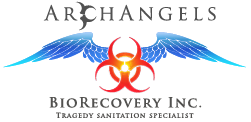- Body Protection: Protecting your eyes, face, head, feet, and hands is critical. Below are key ways to do this.
- Safety glasses and/or face shields should be worn anytime there is risk of foreign objects being exposed or anticipated hazards.
- Workers should wear shoes or boots with slip resistant and puncture-resistant soles to prevent crushed toes when working with heavy objects that could fall.
- Snug-fitting gloves should be worn that are suitable for the job. For example, insulated gloves and sleeves should be worn when exposed to electrical hazards.
- Hard hats should be worn when there is potential for falling objects, bumps to the head from objects, or contact with electrical hazards. Hard hats should be routinely inspected to ensure they are free of dents, cracks, or deterioration.
- Hazardous Communication: In an effective employee training program, a written hazardous communication needs to address Material Safety Data Sheets (MSDS). All of the hazardous substances in the workplace should be recorded on a list and readily available for workers to see. All hazardous substances should be labeled with warnings and health hazards.
- Scaffolding Safety: Scaffolding should be set on sound footing and should always be fully planked. Damaged parts that affect the strength of the scaffold should be removed. Workers are not to use scaffolds in bad weather or when covered with slippery materials, like snow, or ice. Workers should not add more weight that the scaffold is designed to hold.
- Electrical Safety: It is prohibited to work on new and existing energized electrical circuits until all power is shut off. All tools and equipment are kept in safe condition and checked on a regular basis for any defects. Any equipment with defects found must be removed and properly replaced.
- Crane & Forklift Safety: Cranes and forklifts must be inspected daily to ensure safe condition to use. Any defective machinery must be removed from service. Workers must be trained properly on how to operate machinery and follow the directions when using them.
- Post-Accident Cleanup Safety: Cleaning up biohazards like blood spills is dangerous for several reasons. This post explains why you should not allow your staff to clean up blood spills. Make sure to rely on experts like Archangels.
Unfortunately, sometimes no matter how strict the safety precautions are, accidents and fatal errors can happen. ArchAngels specializes in industrial accident cleanup as a result of tragic deaths. Our first priority is to help you when it matters the most, easing psychological, emotional, and physical trauma in times of crisis. Contact us online or call us 24/7 at 888-750-0200.
Resources:
- https://www.osha.gov/Publications/OSHA3252/3252.html
